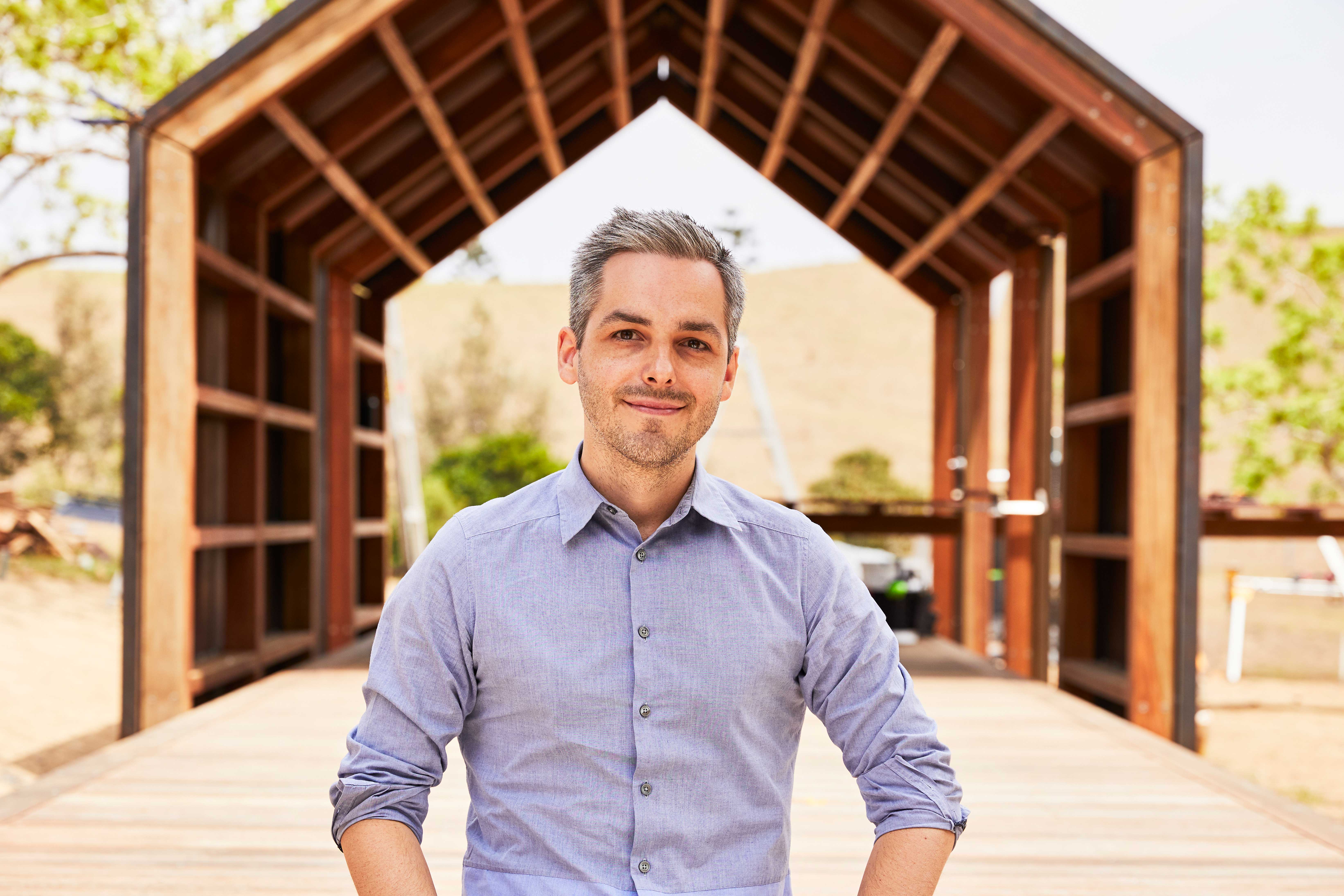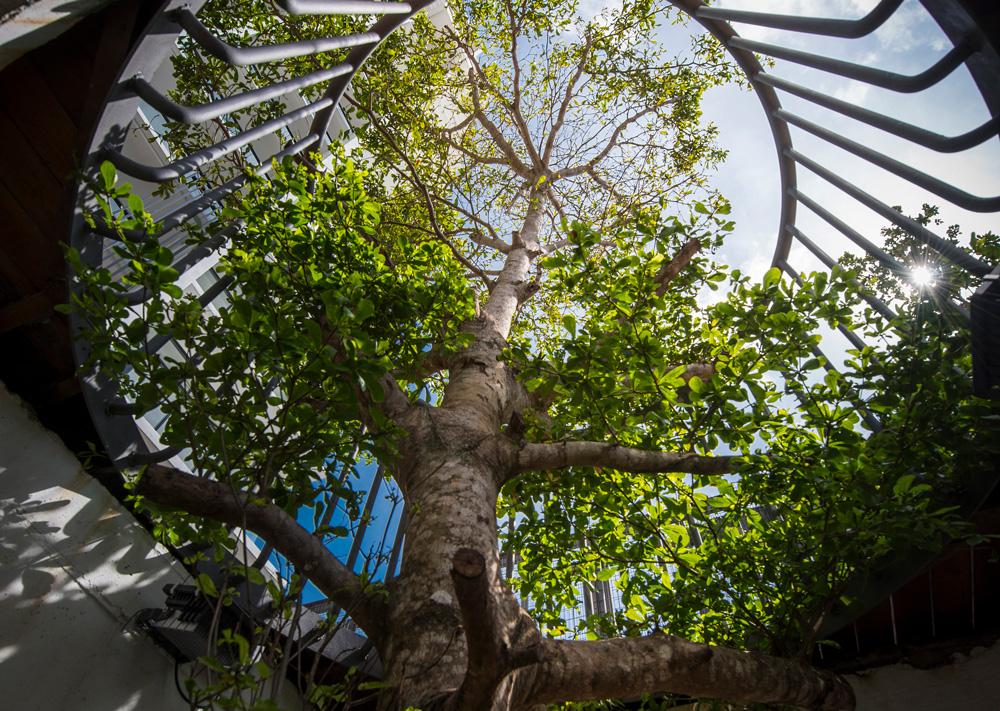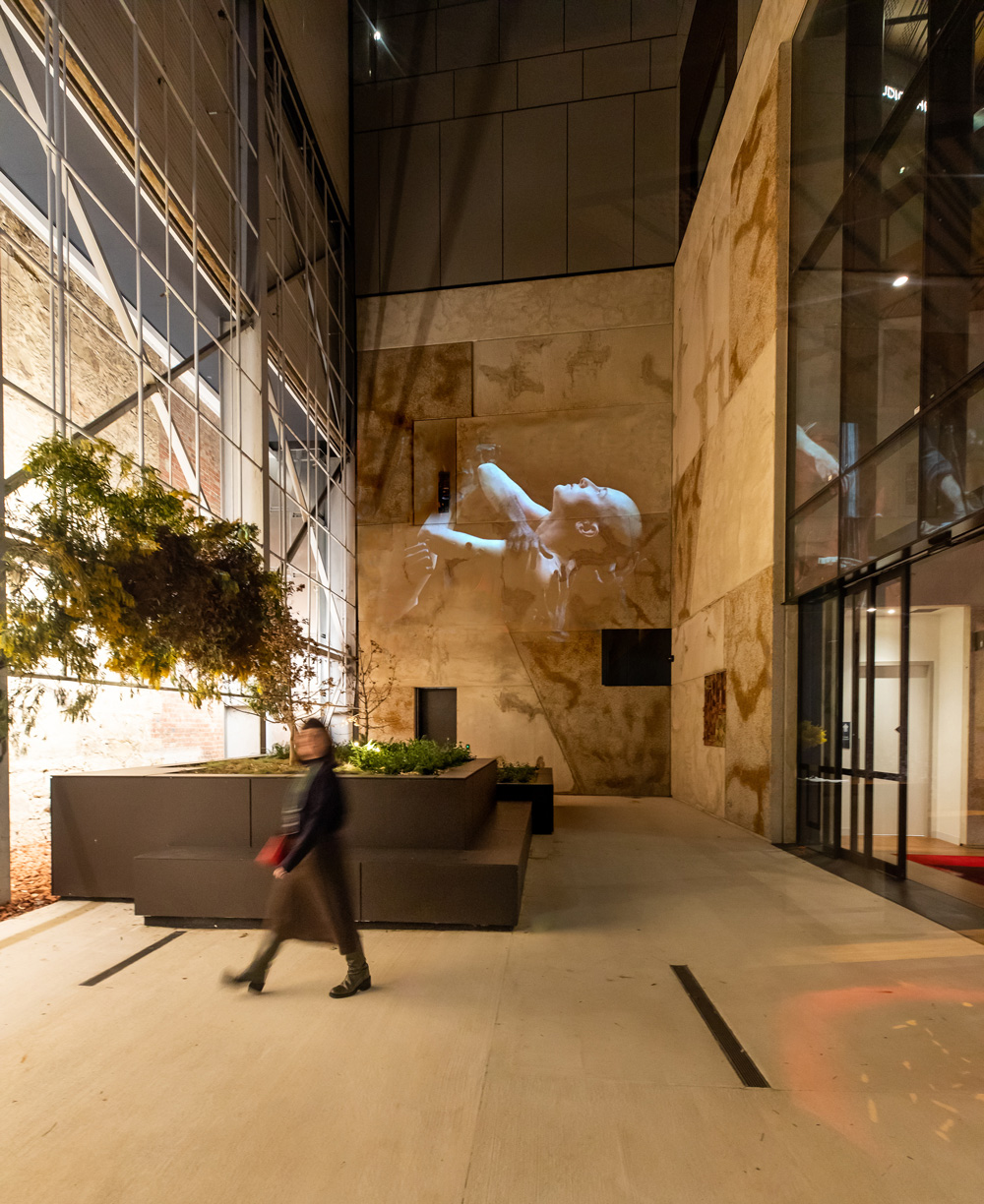The impact of our Architecture alumni is most pronounced on our island, but it’s by no means limited by its watery boundaries.
More than 2,600 graduates have completed Architecture-related courses at the University of Tasmania since 1975, and many have gained local, interstate and global recognition.
Central to their contribution is a deep connection with place. As the celebrated architecture theorist Juhani Pallasmaa wrote, “Architecture articulates and expresses space, time and place. The experience and creation of place is the most fundamental… of these architectural tasks.”
Starting close to home, notable Architecture alums include Peta Heffernan (BEnvDes 1996) and Elvio Brianese (BEnvDes 1991, BArch Hons 1992), who established the award-winning LIMINAL Studio.
Together with WOHA, the practice has received five Tasmanian Architecture Awards for The Hedberg, in central Hobart. At the time of writing, The Hedberg is a finalist in the 2022 World Architecture Festival Awards, a winner in the Cultural Category of the 2022 Architecture MasterPrize international awards and winner of a National Interior Award from the Australian Institute of Architects.
We asked Peta and Elvio to share their story with us.
Tell us about the genesis of LIMINAL Studio, your own motivations for pursuing architecture as a profession and your partnership.
“Architecture is meaningful to us due to the impact it can have on the liveability of cities, people’s sense of wellbeing and placemaking that gives back to community.
"LIMINAL means at the threshold, exploring the potential of what can be."
The questioning that led to the creation of LIMINAL 11 years ago was how do we expand architecture?
Elvio has fine art and industrial design background and my architecture thesis was on the ‘spatial embodiment of dance’. We wanted to bring our passions for other art and design forms into everyday practice. This was not common in Australia and was breaking the traditional architectural mould.
We created a working environment for the crossfertilisation and exchange of ideas with aspirational thinkers and creators. A bit like a dinner party, where you become so engaged in conversation that ideas flow effortlessly and the creative spark leads to an unexpected discovery or something remarkable. The desire to create this dynamism and realise it daily has informed LIMINAL’s culture.”
How does the place that you live and practice architecture impact your work?
“After time away, we recognised Tasmania as a drawcard for thought leaders, creative practitioners and artists. The creative energy here seems more palpable than in larger cities. Tasmania’s scale generates efficiency when it comes to meeting people across disciplines and backgrounds. Spontaneous encounters often lead to projects.
Our belief in Tasmania frames our perspective. We see ourselves as a Studio operating on an island, on top of a large island, on the top of the world with unlimited connections, dissolving geographical boundaries.
When researching the name for the Studio, we believed it needed to reflect something about the island, the importance of place and creative potential. ‘Liminal’ to us means at the edge, on the threshold, expanding our imaginations to explore the possibilities of what can be.”
You have been recognised for excellence for numerous projects, ranging from the Coastal Pavilions at Freycinet National Park to The Magic Box, a pop-up whisky-tasting installation. Which projects are you most proud of and why?
“We are most proud of the projects embraced by community, that have inspired creative interactions and helped improve the lives of those who inhabit or experience them.
Our approach results in maximum impact with minimal means. We get a thrill from pushing an idea to its limit, solving the pragmatic through the poetic and maximising storytelling potential.
This extends to new and adaptive reuse projects such as schools, university spaces, cultural precincts, tourism accommodation, wellbeing centres, affordable and social housing, residences, as well as performances and objects.”
The Hedberg, a world-class arts precinct and the new home for the University Conservatorium, integrates our interdisciplinary world. The Hedberg demonstrates how a small team, working in collaboration with WOHA, a Singaporean multinational architectural design firm, and other collaborators, can enable the cultural development of Tasmania.
We are excited by the opportunities this will generate not only for Tasmanian practitioners and the development of our creative talent but also in attracting global performers, educators, Tasmanian commissions and collaborations.”
LIMINAL was founded 10 years ago, what does the next decade hold?
“Expanding our global collaborative network across the creative disciplines so we can continue to be inspired and forge paths not yet imagined. We are open to new perspectives and to connections with aspirational people who understand the potency of possibility when the right minds come together.
"Our experience and collaborative partnerships will continue to impact and contribute to the creation of a better world filled with beauty, generosity, wellbeing and joy.”

Exploring place – further afield
On the international stage, alumnus Luke Hayward (MArch Hons 2009) and Japanese interior designer Junko Nakatsuka are trailblazers. They founded atelier Luke, an architecture practice that operates between Japan and Australia.
Last year, Luke was the inaugural recipient of the Emerging Architect Prize at the Australian Institute of Architects International Chapter Architecture Awards. “Luke represents everything we would wish the School’s graduates to aspire to: fluently global and Local, intellectual and artistic, sensitive and audacious,” Dr Julian Worrall, Head of School of Architecture and Professor of Architecture said.

Also in Asia, alumnus Alan Teh (BArch 1999) is taking the sustainable architecture scene by storm with his Green Building designs. Alan, who recalls his days at the University of Tasmania fondly, has been recognised as one of the Top 30 Emerging Architects of Malaysia.
Interstate, many of our alums – such as alumnus Ben Duckworth (BEnvDes 1996, BArch Hons 1998), Head of Design at Hassell – are carving out careers as sole practitioners, or commanding senior positions at large global firms.
Wherever our Architecture alumni find themselves, the inspiration that is Tasmania is bound to be articulated, in small or large ways, in their creative expression.
Written by Lucie Van den Berg for Alumni Magazine Issue 53, 2022.
Connect with our alumni community to discover more.
Top of page: The Hedberg. Architects: LIMINAL Architecture with WOHA | Photo: Dianna Snape




